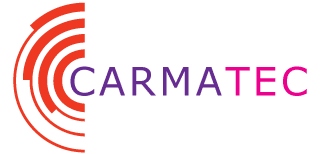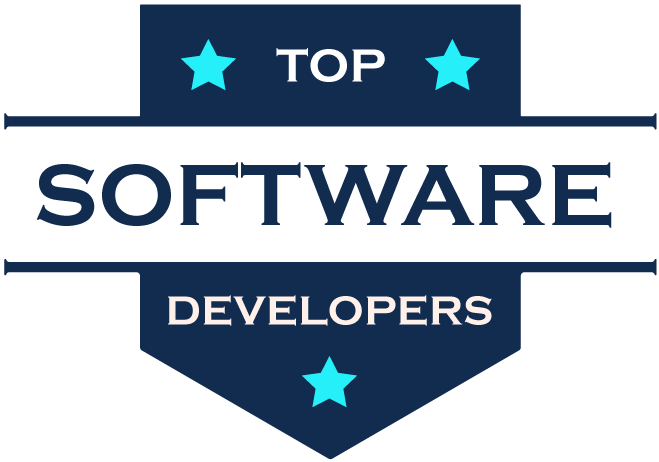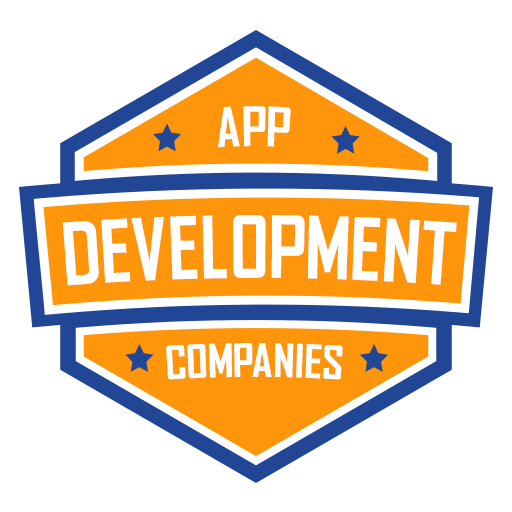ビジネスインテリジェンス(BI) has evolved into a critical component of modern enterprises, enabling organizations to make data-driven decisions, optimize operations, and stay ahead of the competition. In 2025, BI tools continue to leverage cutting-edge technologies like artificial intelligence (AI), machine learning (ML), and advanced データ分析 to provide businesses with deeper insights and better predictive capabilities. This blog explores the top 20 BI tools dominating the market in 2025, highlighting their features, strengths, and what makes them stand out in an increasingly competitive landscape.
目次
What is Business Intelligence?
ビジネスインテリジェンス(BI) refers to the process of collecting, analyzing, and presenting business data to help organizations make informed decisions. BI tools and technologies allow businesses to transform raw data into meaningful insights, providing a comprehensive view of their operations. These insights enable companies to identify trends, assess performance, predict future outcomes, and optimize decision-making processes.
Key Components of Business Intelligence:
- データ収集: Gathering data from various sources such as databases, cloud services, or external sources.
- Data Warehousing: Storing and managing collected data in a centralized location.
- データ分析: Using statistical and analytical methods to interpret the data and extract insights.
- データの可視化: Presenting the data in charts, graphs, and dashboards for easy understanding and decision-making.
How Business Intelligence Tools Simplify Data Transformation?
Business Intelligence (BI) tools play a critical role in simplifying data transformation, making it easier for businesses to convert raw data into actionable insights. Data transformation involves cleaning, structuring, and preparing data from various sources for analysis. BI tools automate much of this process, saving time and reducing the complexity of handling large datasets.
Here are several ways BI tools simplify data transformation:
1. Data Integration
- BI tools seamlessly integrate data from multiple sources, including databases, cloud storage, and third-party applications. This integration allows businesses to centralize their data in one platform, eliminating the need to manually combine data from various sources.
例: Tools like パワーBI そして タブロー support integration with SQL databases, cloud platforms (e.g., AWS, Google Cloud), and Excel, making it easier to unify data.
2. ETL (Extract, Transform, Load) Process
- Most BI tools come with built-in ETL functionality, enabling users to extract data from multiple sources, transform it into a usable format, and load it into a data warehouse for analysis. These tools streamline the ETL process by automating data cleaning and transformation tasks such as deduplication, normalization, and data formatting.
例: Talend そして Informatica offer comprehensive ETL capabilities, allowing businesses to automate repetitive data transformation tasks with minimal manual intervention.
3. User-Friendly Interfaces
- BI tools provide drag-and-drop interfaces that allow non-technical users to easily clean, merge, and structure data without needing advanced programming skills. Users can select fields, apply transformations (e.g., filtering, grouping), and instantly view results, simplifying the data preparation process.
例: Tools like タブロー そして Zoho Analytics offer intuitive, visual interfaces for data manipulation, making it accessible to business users.
4. Automated Data Cleaning
- BI tools automate data cleaning processes by detecting and correcting inconsistencies, missing values, or errors in the dataset. This ensures that the data is accurate and ready for analysis, without the need for manual review and correction.
例: Qlik Sense そして Sisense automatically identify data quality issues, offering users suggestions to fix them through built-in algorithms.
5. Real-Time Data Processing
- Many modern BI tools enable real-time data transformation and processing, which is essential for businesses that need up-to-date insights. These tools transform incoming data in real time, allowing users to make decisions based on the latest information.
例: Domo そして Looker support real-time data ingestion and transformation, enabling businesses to monitor and act on real-time trends.
6. Self-Service Data Preparation
- Self-service BI tools empower business users to perform their own data transformations without relying on IT teams. These tools provide pre-built templates and workflows to guide users through the transformation process, making it accessible to those with limited technical expertise.
例: Alteryx provides self-service data preparation tools that allow users to automate data workflows, combining data from different sources and applying transformations without coding.
7. Advanced Data Transformation with AI/ML
- Some BI tools use 人工知能 そして 機械学習 to recommend or automatically perform transformations, such as detecting patterns in the data or suggesting the best ways to aggregate data for analysis. This reduces manual work and improves the accuracy of the transformed data.
例: Microsoft Power BI incorporates AI-driven insights to suggest the most relevant transformations or aggregations, speeding up the data preparation process.
8. Customizable Dashboards and Reports
- データが変換されると、BIツールによって、ユーザーはカスタマイズ可能なダッシュボードやレポートを作成し、クリーニングされたデータを視覚化することができる。これにより、企業は変換されたデータからトレンド、パターン、洞察を迅速に理解することができる。
例: Looker そして タブロー は、理解しやすい形式で洞察を示すダッシュボードを作成するための広範なカスタマイズオプションを提供します。
2025年、ビジネス・インテリジェンス・ツールのトップ20は?
1.タブロー
Tableauは、ユーザーフレンドリーなインターフェイス、堅牢なデータ可視化機能、さまざまなデータソースとの統合機能で有名な、主要なBIツールの1つです。その使いやすさと高度な分析機能により、業界を問わず広く採用されている。
主な特徴
- ドラッグ&ドロップ・インターフェース
- 広範なデータソース接続
- AI主導のアナリティクス(アスク・データとエクスプレイン・データ)
- 強力なダッシュボードとレポート
2.パワーBI(マイクロソフト)
マイクロソフトのPower BIは、Azure、Excel、SharePointなどのマイクロソフト製品とのシームレスな統合を提供し、最も包括的なBIプラットフォームの1つとして繁栄し続けており、企業レベルのソリューションに愛用されている。
主な特徴
- リアルタイム分析
- 内蔵AI機能
- マイクロソフトのエコシステムとのネイティブな統合
- 強力なデータモデリングと変換
3.Qlik Sense
Qlik Senseは、独自の連想分析エンジンを提供し、ユーザーが事前に定義されたクエリなしでデータを探索できるようにします。BIへのセルフサービスアプローチにより、専門知識を持たないユーザーでも簡単に洞察を得ることができます。
主な特徴
- 探索のための連想データモデル
- AIを活用したインサイト(Qlik Insight Advisor)
- マルチクラウド展開オプション
- 豊富なデータ可視化ツール
4.ルッカー(グーグル)
Google Cloudの一部となったLookerは、データ探索とリアルタイム分析を提供するクラウドネイティブなBIツールです。Lookerは、企業がデータから洞察力を引き出すための大規模な支援に優れています。
主な特徴
- リアルタイムデータ分析
- 堅牢なデータモデリング
- Google Cloudとのシームレスな統合
- データガバナンス・ツール
5.サイセンス
Sisenseは、さまざまなソースからの複雑なデータを処理する能力で際立っています。組み込みの分析機能で知られ、BIを既存のアプリケーションに統合したい企業に最適です。
主な特徴
- 高速分析のためのインチップ・テクノロジー
- カスタムアプリケーションのための組み込み分析
- AIによるデータ探索
- インタラクティブ・ダッシュボード
6.ドーモ
Domoは、データ統合、可視化、コラボレーションを統合したクラウドベースのBIプラットフォームである。すべての事業部門にわたってリアルタイムのデータ洞察を必要とする組織に適している。
主な特徴
- クラウドネイティブ・プラットフォーム
- モバイルファーストデザイン
- リアルタイムのコラボレーションとアラート
- 予測的洞察のためのAIとMLの統合
7.SAP BusinessObjects
SAP BusinessObjects は、SAP の ERP システムやその他のシステムとの強固な統合を提供し、企業レベルのレポート作成と分析のための強力なツールであり続けています。 エンタープライズ・アプリケーション.
主な特徴
- 広範なエンタープライズ・レポート機能
- SAPや他のERPとの統合
- アドホック・クエリ分析
- 高度なレポートとダッシュボード
8.Zohoアナリティクス
Zoho Analyticsは、その手頃な価格と使いやすさで知られ、中小企業に適したさまざまなBIおよびデータ分析ツールを提供している。
主な特徴
- ドラッグ&ドロップ・インターフェース
- データの混合と統合
- AI搭載の洞察力アシスタント「Zia
- 手頃な価格設定
9.マイクロストラテジー
MicroStrategy is a comprehensive enterprise-grade BI solution known for its mobile BI capabilities and advanced data discovery features. Its focus on big data and advanced analytics makes it a strong contender.
主な特徴
- Mobile intelligence with offline access
- Advanced analytics and big data support
- HyperIntelligence for contextual insights
- Enterprise-level scalability
10. TIBCO Spotfire
TIBCO Spotfire is an advanced analytics tool that offers powerful predictive analytics, geolocation analytics, and real-time analytics, making it a favorite among data scientists and technical users.
主な特徴
- 予測分析と機械学習
- Geospatial analytics
- Real-time data streaming
- AI-driven data discovery
11. IBM Cognos Analytics
IBM Cognos is a long-standing BI tool that combines AI-infused analytics with enterprise reporting capabilities. Its focus on automated insights and storytelling sets it apart.
主な特徴
- AI-driven analytics and reporting
- Data storytelling tools
- インタラクティブ・ダッシュボード
- Integration with IBM Cloud and Watson AI
12. Yellowfin BI
Yellowfin BI is known for its embedded analytics capabilities and collaboration tools. It allows users to seamlessly integrate BI into their workflows and offers automated insights.
主な特徴
- Embedded analytics
- Automated data insights
- Data collaboration features
- Customizable dashboards
13. Dundas BI
Dundas BI provides a flexible and customizable analytics platform suitable for businesses of all sizes. Its strength lies in its visual data analytics and ability to integrate with existing workflows.
主な特徴
- Fully customizable dashboards
- リアルタイムデータ分析
- Built-in ETL (extract, transform, load) tools
- Self-service BI capabilities
14. Oracle Analytics Cloud
Oracle Analytics Cloud is a cloud-first BI solution that leverages AI and machine learning for advanced data analytics. It offers powerful visualizations and integrates seamlessly with other Oracle products.
主な特徴
- AI-driven analytics
- Comprehensive data preparation tools
- Integration with Oracle Cloud
- Powerful visualization and reporting tools
15. GoodData
GoodData focuses on embedded and real-time analytics, making it a popular choice for companies looking to offer analytics as a service (AaaS) to their customers.
主な特徴
- Embedded analytics
- Real-time data insights
- Scalable cloud architecture
- Customizable BI tools
16. ThoughtSpot
ThoughtSpot is an AI-powered analytics platform known for its search-driven analytics, enabling users to get insights by simply typing questions. It’s highly scalable and ideal for large enterprises.
主な特徴
- Search-driven data analytics
- AI-powered insights
- Scalable for enterprise use
- Real-time analytics capabilities
17. Metabase
Metabase is an open-source BI tool that’s easy to use, making it popular among small businesses and startups. It offers self-service analytics with a focus on simplicity and affordability.
主な特徴
- Open-source platform
- Simple, user-friendly interface
- Self-service reporting
- インタラクティブ・ダッシュボード
18. Clear Analytics
Clear Analytics is an Excel-based BI tool that allows businesses to leverage Excel’s familiar environment while offering more advanced reporting and data visualization capabilities.
主な特徴
- Excel-based interface
- Data integration and blending
- Self-service reporting
- Advanced visualizations
19. KNIME
KNIME is an open-source platform for data analytics, reporting, and integration, favored by data scientists and advanced users for its flexibility and advanced machine learning capabilities.
主な特徴
- Open-source and highly customizable
- Advanced machine learning and data mining
- Integration with various data sources
- Workflow automation and data transformation
20. Mode Analytics
Mode Analytics is a collaborative data platform that combines SQL, R, and Python in one environment, making it ideal for data analysts and data scientists working on complex datasets.
主な特徴
- Integrated SQL, R, and Python support
- Collaborative data analysis
- Real-time reporting
- Customizable dashboards and reports
結論
In 2025, the landscape of Business Intelligence tools has become more diverse, powerful, and accessible than ever before. Whether you’re a large enterprise or a small startup, there’s a BI tool to fit your needs, from advanced AI-driven platforms to user-friendly, affordable solutions. As businesses continue to prioritize data-driven decision-making, these tools will play a critical role in shaping the future of analytics, making it easier to uncover actionable insights and drive growth.
Choosing the right BI tool depends on your organization’s specific needs, such as scalability, integration, user-friendliness, and advanced features. With the right tool in hand, businesses can unlock the full potential of their data, drive efficiency, and stay ahead of the competition. To know more connect with カーマテック.
よくある質問
- What are the key features to look for in a Business Intelligence (BI) tool in 2025?
In 2025, key features of a BI tool include AI-driven analytics, real-time data processing, intuitive data visualizations, self-service capabilities, integration with multiple data sources, and scalable cloud-based deployment. Additionally, user-friendly interfaces and machine learning capabilities for predictive analytics are becoming essential.
- Which BI tools are best suited for large enterprises in 2025?
Tools like Microsoft Power BI, Tableau, Qlik Sense, IBM Cognos Analytics, and SAP BusinessObjects are ideal for large enterprises due to their scalability, robust data integration options, and advanced analytics capabilities. They offer enterprise-grade security and extensive reporting features that cater to the needs of large organizations.
- What are the benefits of using AI-powered BI tools?
AI-powered BI tools provide automatic insights, predictive analytics, and advanced data processing, enabling faster and more accurate decision-making. They help businesses identify trends, forecast outcomes, and recommend actions based on data patterns, reducing the need for manual data analysis.
- Which BI tools offer the best options for small businesses?
Zoho Analytics, Metabase, and Clear Analytics are well-suited for small businesses due to their affordability, ease of use, and self-service analytics capabilities. These tools provide intuitive interfaces and simplified data visualizations, making them accessible even to non-technical users.
- What are embedded analytics, and which BI tools offer this feature?
Embedded analytics refers to the integration of BI capabilities directly into other business applications, enabling users to access real-time data insights within their existing workflows. Tools like Sisense, Yellowfin BI, and GoodData offer strong embedded analytics features, allowing businesses to enhance their software or platforms with built-in data insights.













